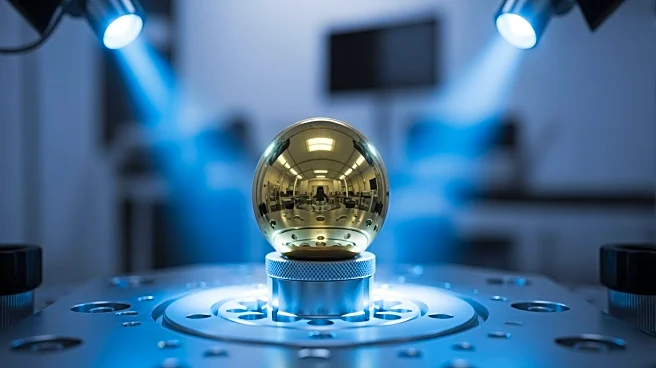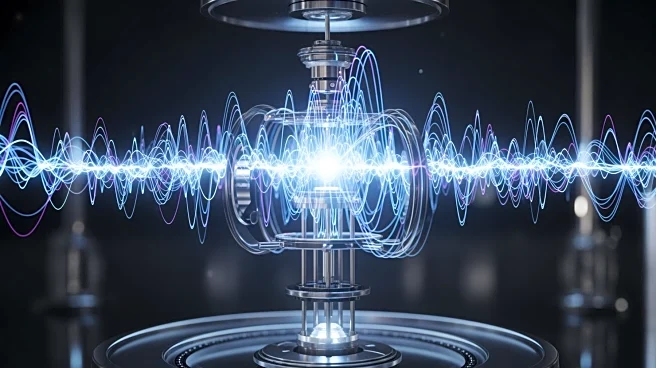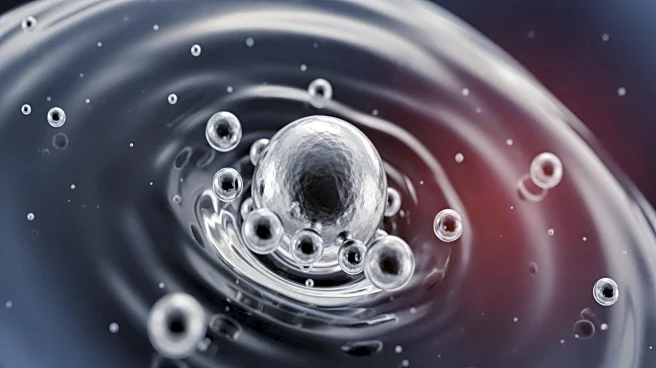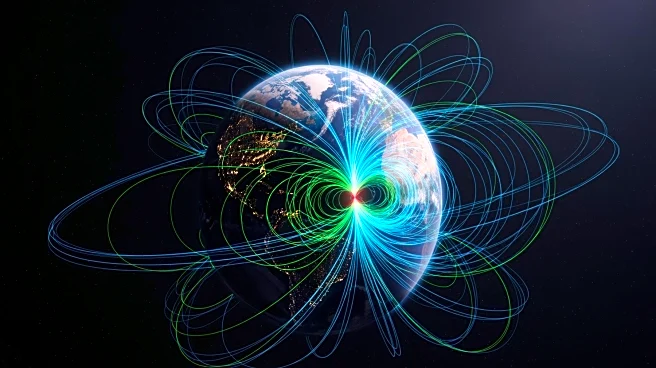What's Happening?
Researchers at Lawrence Livermore National Laboratory (LLNL) have conducted groundbreaking experiments on gold, achieving the highest-pressure structural measurement ever made for the material. The study,
published in Physical Review Letters, involved compressing gold to 10 million times Earth's atmospheric pressure using tailored laser pulses at the National Ignition Facility and the OMEGA EP Laser System. This extreme pressure caused gold atoms to rearrange from their usual face-centered cubic structure to a body-centered cubic structure, while some atoms retained the original structure, indicating a coexistence of states. These findings are crucial for planetary modeling and fusion science, as gold is a common reference material for high-pressure science due to its chemical stability and detectability with X-rays.
Why It's Important?
The ability to measure gold's behavior under such extreme pressures has significant implications for various scientific fields. Gold is often used to calibrate static measurements of pressure, making these findings essential for ensuring the accuracy of experiments involving planetary cores and the design of new materials. The study resolves long-standing discrepancies between theoretical predictions and experimental observations of gold's behavior at high pressures. This research provides a stronger foundation for using gold as a high-pressure standard and enhances the understanding of matter under extreme conditions, which is vital for advancements in fusion science and planetary modeling.
What's Next?
The study highlights the need for temperature diagnostics to refine phase boundaries in high-pressure experiments. Future research may focus on exploring other materials under similar conditions to expand the understanding of atomic behavior at extreme pressures. The findings could lead to improved calibration techniques for high-pressure experiments, benefiting fields such as materials science and planetary exploration. Additionally, the insights gained from this study may contribute to the development of new technologies in fusion energy, as understanding matter under extreme conditions is crucial for advancing fusion science.
Beyond the Headlines
The research conducted by LLNL not only advances scientific knowledge but also underscores the importance of collaboration between institutions to achieve breakthroughs in high-pressure science. The use of advanced facilities like the National Ignition Facility demonstrates the role of cutting-edge technology in pushing the boundaries of experimental physics. This study may inspire further interdisciplinary research, combining physics, materials science, and engineering to explore the potential applications of materials under extreme conditions, potentially leading to innovations in various industries.












